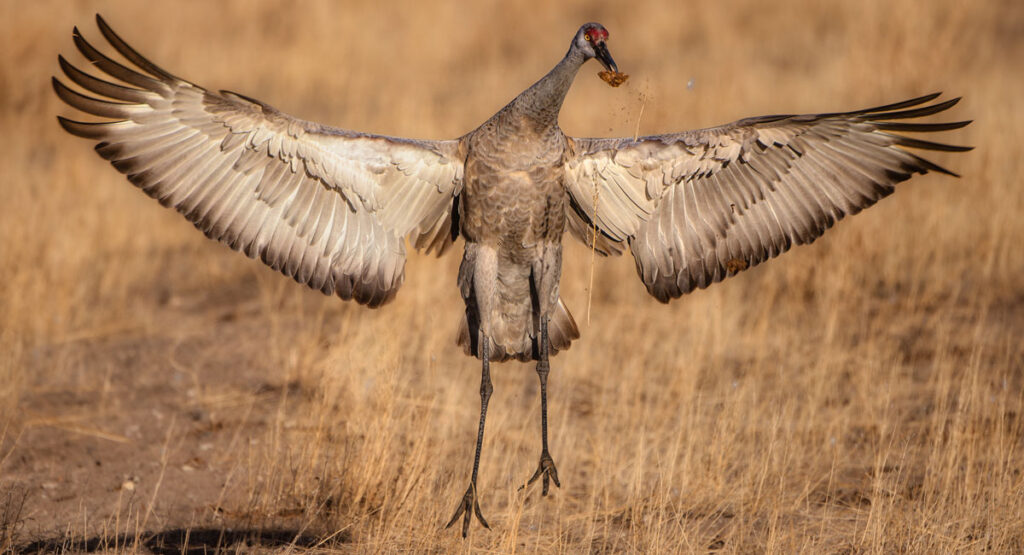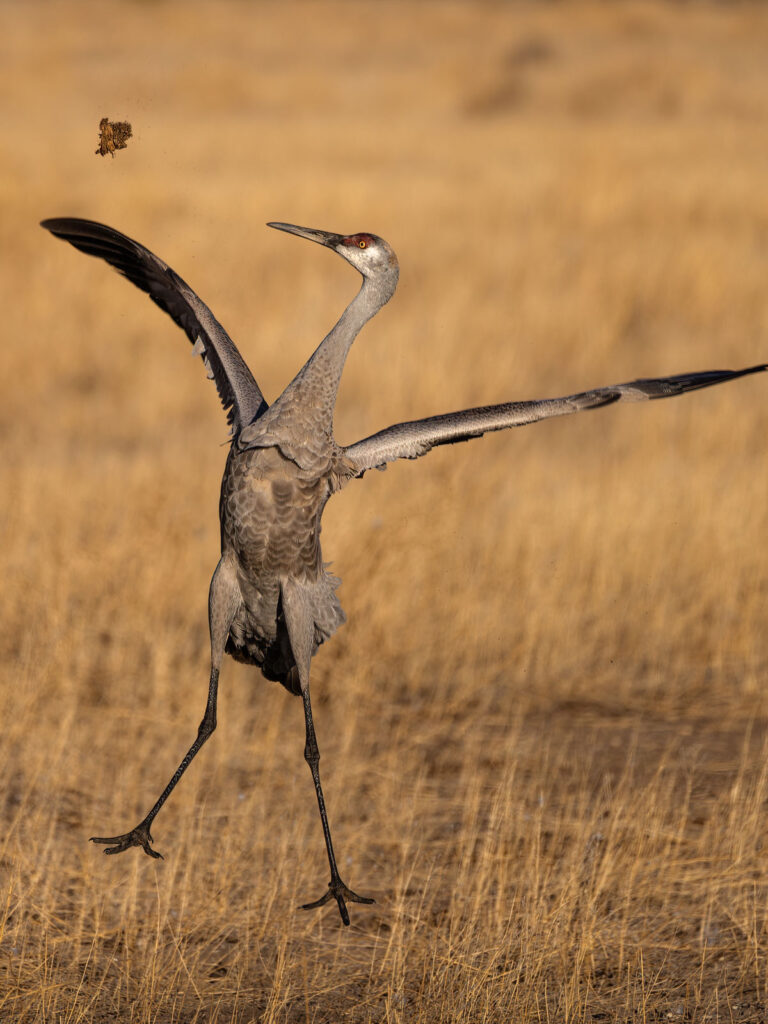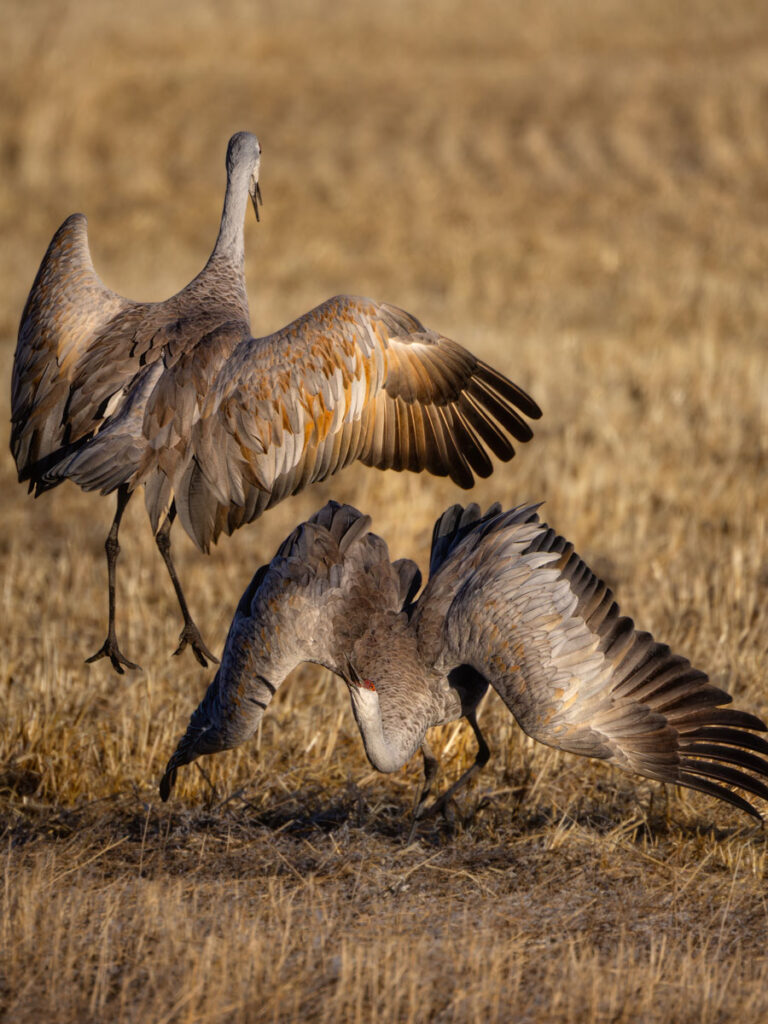
Whether showing off their dance moves in wet meadows or filling the sky with their massive wingspans, sandhill cranes are magnificent birds that can be found throughout most of North America and even parts of Siberia. These birds are known for their distinctive calls, which can often be heard from great distances—some say up to 2.5 miles away! How do you know if you’ve seen one? Well, the sandhill cranes sport a recognizable red crown which is a major contrast from the rest of their tall, grayish body.
Water is key to the sandhill crane habitats.
Chances are if you recreate along our waterways you’ve seen a crane. If not, maybe you’ve at least heard their loud, rolling, trumpeting sound. They prefer river basins, wetlands, marshes and other areas with shallow water where they can easily find food. They are also known to inhabit agricultural fields, meadows and grasslands. During the breeding season, they typically choose areas with tall vegetation that gives good cover and protection to their nests. These habitats provide the cranes with water and a place to rest but also the right diet. While plants make up the majority of their food, they will occasionally eat small mammals or amphibians. Sandhill cranes have long beaks that allow them to probe wetlands for seeds, berries and insects.
Sandhill cranes are family-centered birds that love to socialize!
Sandhill cranes are social birds typically living in pairs or small family groups. The males are known for their elaborate courtship displays, which involve dancing, bowling, calling and even tossing small objects into the air. Who says chivalry is dead? They also typically mate for life and share nesting roles together.
During migration, their flocks are composed of hundreds of cranes that include family groups and unmated birds. Constant communication is key for these birds to successfully complete their long flights. Sometimes you may find various flocks congregating together during migration and at winter stopovers, bringing the number up to the thousands.
Sandhill cranes may fly up to 400 miles in one day.
The migration pattern of the sandhill cranes is honestly what we find the most interesting. Many populations spend the summer in the northern United States and Canada before flying south for the winter. In the western US, the largest concentration of sandhill cranes can be found in the San Luis Valley in southern Colorado, where around 20,000 cranes gather each fall to rest and feed before continuing their journey south. Other important stopover areas include the Platte River in Nebraska and the Bosque del Apache National Wildlife Refuge in New Mexico. Sandhill cranes are very strong flyers and may fly up to 400 miles in one day during the migration season. It’s hard to fathom given it can take us anywhere from five and half to nine hours to drive that length with a car.
Let’s keep them moving and dancing.
Despite their widespread distribution, sandhill cranes are not immune to the effects of human recreation, development and climate change. The landscapes along the cranes’ migration paths are rapidly changing. When they experience habitat disturbance or loss, their resting and breeding grounds become compromised. If this continues, the population of sandhill cranes will quickly plummet. Fortunately, there are many organizations—like Forever Our Rivers—working hard to protect and restore important riparian habitats suitable for these birds.
Sandhill cranes are fascinating birds with habitat, behaviors and migration patterns that make them a valuable part of our natural heritage. Did you know that a ten-million-year-old sandhill crane fossil was found in Nebraska? So far, this makes them the oldest known surviving bird species. Conservation efforts are essential to ensure that future generations can continue to enjoy the beauty and grace of these historical, elegant birds.
Check out this recent video of the sandhill crane migration in the San Luis Valley in Colorado. If you haven’t gotten a chance to see these amazing birds, we hope you get the lucky opportunity to do so soon.


